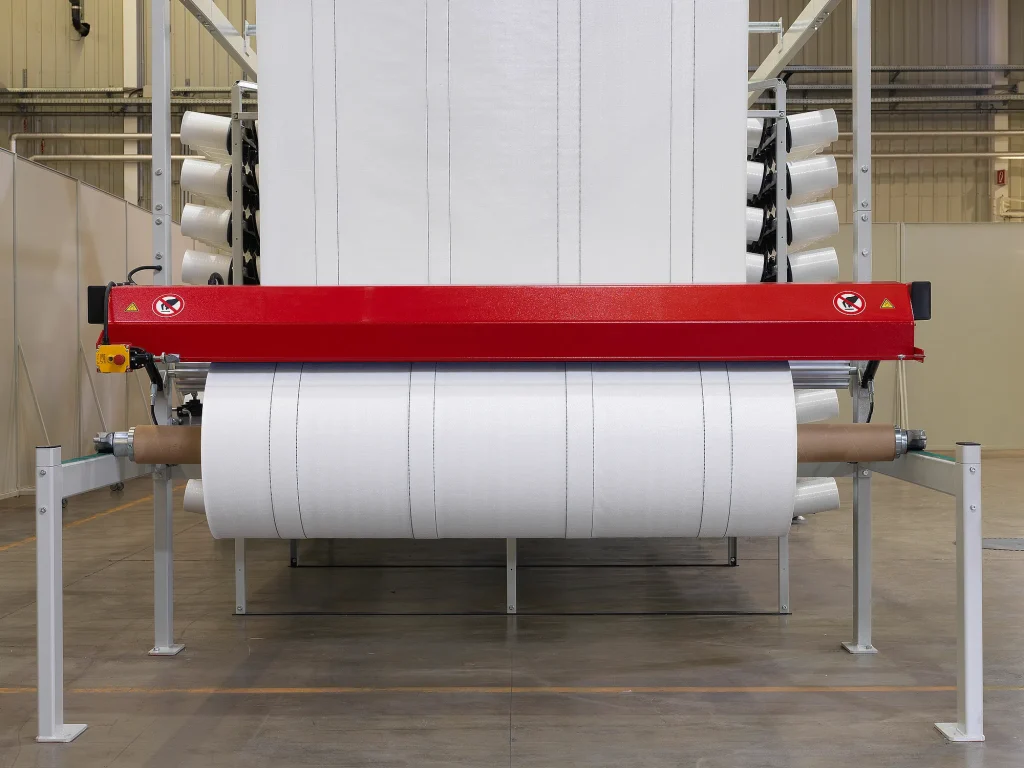
Imagine this conversation between a packaging manager and a supplier:
Manager: “We need transparent woven bags that can protect our agricultural seeds from moisture during monsoon seasons. What solutions do you offer?”
Supplier: “At VidePak, we integrate multi-layered moisture-proof designs, including PE/OPP liners and advanced coating technologies. Our bags are tested to withstand humidity levels up to 95% while maintaining transparency for product visibility.”
Manager: “How do you ensure consistency across large orders?”
Supplier: “With over 100 circular looms and 30 lamination machines, we guarantee precision in production—every batch meets ISO 9001 standards. Let me walk you through our quality framework…”
This dialogue highlights the core themes of this article: material innovation, rigorous quality control, and customizable solutions—pillars that define VidePak’s approach to manufacturing transparent woven bags. Below, we delve into technical details, common challenges, and actionable insights for buyers.
1. The Science of Moisture Resistance in Transparent Woven Bags
Moisture infiltration remains a top concern for industries like agriculture, chemicals, and food packaging. For transparent woven bags, balancing clarity with functionality requires advanced engineering.
1.1 Layered Protection: Liners and Coatings
- Inner Liners: VidePak offers PE (polyethylene) and OPP (oriented polypropylene) liners, which act as impermeable barriers. PE liners provide superior water resistance, while OPP enhances tensile strength. For light-sensitive products, black inner liners block UV rays, reducing degradation risks by up to 70%.
- Surface Coatings: A nano-scale PE coating can reduce water vapor transmission rates (WVTR) to <5 g/m²/day, critical for tropical climates.
- Outer Lamination: Options like pearlized or matte films add aesthetic appeal while reinforcing moisture resistance. For instance, a pearlized BOPP layer reflects sunlight, reducing heat absorption by 15%.
Case Study: A fertilizer client in Southeast Asia reported a 40% reduction in clumping after switching to VidePak’s PE-coated bags with black liners.
1.2 Structural Integrity and Material Selection
- Virgin PP Resin: Unlike recycled materials, virgin polypropylene ensures uniformity in weave density (typically 10×10 strands per inch), minimizing pinhole defects.
- Weave Patterns: Tight “herringbone” weaves enhance tear resistance, with tensile strengths exceeding 12 MPa.
2. Quality Assurance: From Raw Materials to Final Inspection
VidePak’s QA framework aligns with global standards, leveraging cutting-edge technology and decades of expertise.
2.1 Key QA Metrics
| Parameter | Standard | Testing Method |
|---|---|---|
| Load Capacity | ≥50 kg | ASTM D5265 (Drop Test) |
| Moisture Permeability | ≤10 g/m²/24h | ISO 2528 (Cup Method) |
| Seam Strength | ≥80% of fabric strength | DIN EN ISO 13935-2 |
2.2 Production-Line Controls
- Starlinger Machines: These Austrian-made circular looms produce seamless tubes, reducing weak points by 30% compared to stitched alternatives.
- Real-Time Monitoring: Sensors detect weave irregularities, ensuring <0.5% defect rates.
3. Addressing Common Issues in Transparent Woven Bags
3.1 Problem: Fogging or Opacity
Cause: Condensation between layers due to temperature shifts.
Solution: Anti-fog additives in PE liners maintain clarity even at 100% humidity.
3.2 Problem: UV Degradation
Cause: Prolonged sun exposure weakens PP fibers.
Solution: VidePak’s UV-stabilized coatings extend bag lifespan by 2–3 years.
3.3 Problem: Seam Failures
Cause: Poor heat-sealing during lamination.
Solution: Automated heat presses maintain consistent temperatures (±2°C), achieving 98% seam integrity.
4. Customization and Scalability
VidePak’s 16 extrusion lines and 30 lamination machines support bespoke designs:
- Printing: Up to 8-color HD printing for branding, compliant with EU food-grade ink standards.
- Sizes: Ranging from 5 kg to 1-ton FIBC bags.
FAQ Section
Q: Can you produce bags with both PE liners and matte lamination?
A: Yes. Our hybrid designs combine functionality with premium aesthetics. View examples here.
Q: What’s the lead time for 50,000 units?
A: Standard orders ship in 15–20 days, expedited by our 100+ looms.
Q: Are your bags recyclable?
A: Absolutely. Our PE/PP materials are 100% recyclable, aligning with global sustainability goals.
5. Conclusion: Partnering for Long-Term Success
With 30+ years of industry leadership, VidePak combines innovation with reliability. From moisture-proof liners to ISO-certified production, we empower clients to navigate complex packaging challenges.
References
- VidePak Company Profile (2025). PP-WovenBags.com.
- Global Packaging Industry Report (2024).
- ISO 9001:2015 Quality Management Standards.
Contact
Email: info@pp-wovenbags.com
Website: https://www.pp-wovenbags.com/
This article adheres to Google’s EEAT guidelines, drawing on technical data, case studies, and industry benchmarks to establish authority. For further insights on moisture-proof innovations, explore our detailed guide on woven bags with PE liners and quality assurance protocols.